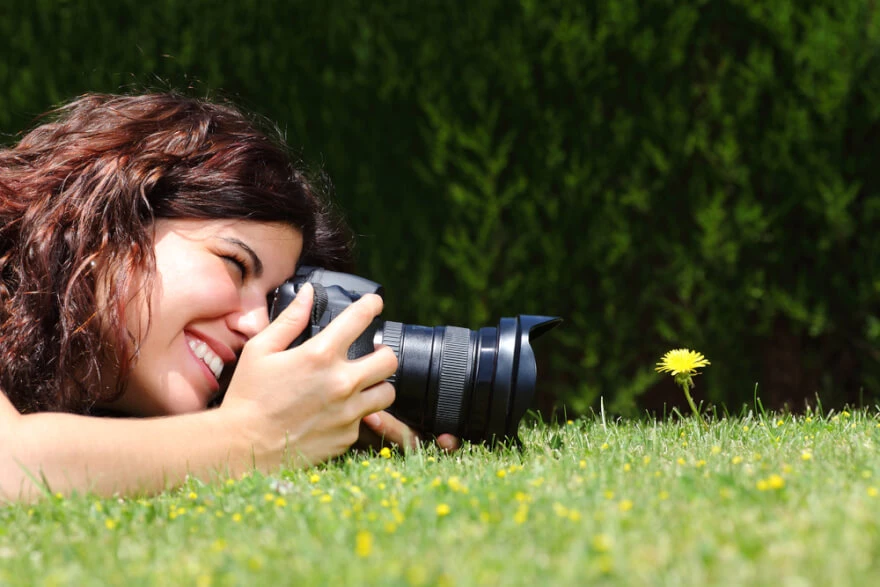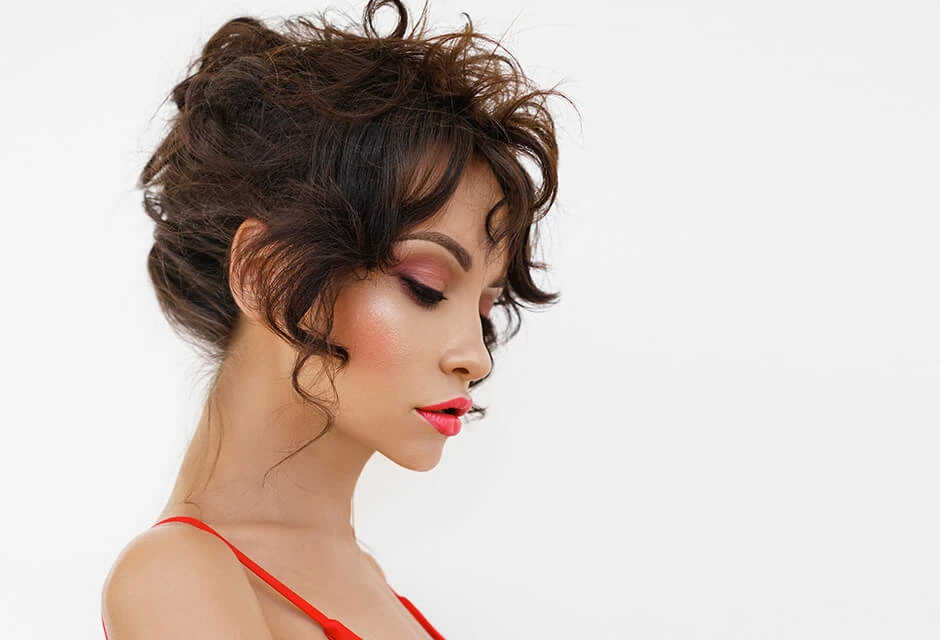TOP-12 Best Creative Macro Photography Ideas

- 1. Watch the sharpness
- 2. Choose right background
- 3. Use a tripod
- 4. Play with natural lens effect
- 5. Best device to use
- 6. Macro extension tube
- 7. Keep an eye on exposure
- 8. Find appropriate lighting
- 9. Casting for a model
- 10. Admire flowers and textures
- 11. Appreciate water gifts
- 12. Become a real jewelry lover
It is time to discover a new theme as macro photography, which can be an art itself. Some of the best images are done with this creative caption mode. Usually a beginner is frustrated when he cannot catch the desired object in focus. Sometimes snapshots seem blurry and ghosty. In general, there are quite a few problems for disappointment, which are going to be solved in this article. Not all items are good to be captured in this mode, because may seem weird and confusing without description or right contest. Get as much patience as possible and shoot everything you like, but check results afterwards. If the picture seems unusual but nice to look at, then it is your perfect model to capture.
In brief, macro photography tips and tricks are:
- Plan composition and story
- Check camera settings
- Focus and zoom with right lens
- Tripod is a must have
- Use specific lights and flash
- Concentrate on nature and its numerous models

First of all, it is worth mentioning that this photo mode is called this way, because of close-up shooting of small objects. At the same time, in the end, the object turns out to be, usually, much larger than it actually is.
Insects, eyes, flowers, grass, coins, food, feathers and jewelry are usually the favorite items of macro-professionals. Still, there are some technical issues to pay attention to, when getting closer to your model.
1. Watch the sharpness

This parameter is responsible for the number of working details in the frame. The greater the depth, the more objects get into focus. Smartphone cameras are not designed for shooting when the object is located as close as possible to the lens. The closer you hold the camera, the smaller the depth of field will be. On the other hand, through a blur you can achieve a very interesting effect, which will allow the viewer to focus on specific details.You can be tortured with focusing, even with a good tripod.
2. Choose right background

In order to emphasize certain details in the picture, focusing on them may not be enough. Despite the fact that the backdrop is blurred, it is important not to allow a combination of monochromatic colors. Photographers have time not only to prepare the subject, but also to find the right lighting and landscape. If you practice indoors, you can use a special lightbox. Still, every tiny mistake and wrong color choice can be fixed with online software. Of course, it is better to give as much attention as possible to all significant details during the shooting.
3. Use a tripod

In terms of focus sensitivity, creative macro photography resembles creation of pictures using digital or optical zoom. The slightest movement can cause blurry results. Professionals advise to use additional equipment or breathing techniques: relax your body, slightly stretch your arm and hold your breath when you press the shutter button.
Nevertheless, even a light tap can move the focus. In this case, you can turn on the option of delayed shooting, so that you will only have to hold firmly your hands, and the automatic option will do the rest of the work.
4. Play with natural lens effect

The easiest way to improve the quality of shots is to put a drop of water on the lens. With the right dosage, the drop will turn into a natural lens. However, this method entails several difficulties:
- It is important to choose the purest water so that the smallest grains in a drop do not spoil the result.
- Necessary dosage will have to be selected accurately, so that the drop does not turn into a muddy film.
- It is necessary to apply a drop very carefully, so that an ideal hemisphere is obtained.
Definitely, a more reliable way is to purchase a special lens that fits your camera.
5. Best device to use

In fact, it’s good enough to choose a regular digital camera, since those have an appropriate mode and lens capabilities are also often sufficient, but the DSL is more convenient. Using a DSLR, one will be able to pick up necessary equipment, and keep all settings under control, achieving the maximum result! Do not neglect additional equipment as a “third hand” item, which may provide necessary support and form to the model you are shooting.
6. Macro extension tube

Another budget option for a DSLR is an extension tube, which will permit it to get as close to the subject as possible with a conventional lens. In case you are not able to get closer you just put it between camera and lens, to reduce the focusing distance. Sizes of these tubes vary from the result you are looking to achieve. But when using tubes (especially not expensive ones), sometimes, automatic options stop working, like autofocus and aperture control, which is very uncomfortable!
7. Keep an eye on exposure

Forget about some automatic solutions, when you try macro photography techniques. Set the aperture priority. The fact is that if you select an open diaphragm, then the depth may not be more than the thickness of the razor blade! Shooting closely, the aperture should be as small as possible, F / 11 or even F / 22! It is better to check several options on practice, to see which format suits the situation more. There is no universal advice on this issue.
8. Find appropriate lighting

In order to reduce the exposure, it is necessary to add more lights! And if it is possible to make beautiful photographs at sunny noon, then indoors, with a lack of sunlight, a flash is simply essential.
Picturing wildlife is not as simple as it may seem initially. In addition to technical issues for taking clear pictures, people endlessly face the fact that insects have a habit of escaping, crawling, flying away as soon as you get close.
It is almost impossible to imagine a successful shot without a flash. In bad weather, it will provide a necessary amount of light, and in sunny weather will remove contrasting shadows.
9. Casting for a model

Insects have incredible bodies, and one of the goals is to show their amazing life in all colors and details. To get a good shot, we focus on the eyes, legs and bodies of these tiny creatures, as well as on details of their miniature world.
Try capturing a brightly lit insect against a dark background. If you expose a well-lit object in bright daylight or with a flash, a dark background will turn out to be underexposed and will look almost black. This allows you to get your model clearly stand out.
Insects are more active in warmer weather: take pictures of them early in the morning or in the evening. Natural lighting at this time of day is also more advantageous.
10. Admire flowers and textures

Try to treat flowers and plants, as portrait models. Making pictures of people, we try to show their character, individuality, and focus on unique characteristics. So why should we not do the same with plants? Each plant has its own peculiar color, texture, form. You should see and present them in all their glory with the help of settings and successful angles.
It is obvious that textures surround us literally everywhere, and as soon as you capture everyday things, such as brick walls, trees and grass, you will want to capture something unusual or different, but still present in our life.
Some unusual places often become excellent, original textures. Metal, wooden and fabric textures can provide endless options for very good results.
11. Appreciate water gifts

Water drops can easily explain how to make macro photos. It attracts attention, reflects light into fancy patterns, and is easy to shoot: just turn on the water tap! In addition, there is nothing so easy to find at home.
Better not to forget optical properties of water droplets. These are double-convex lenses that conduct and focus the light, and the focal length of all drops will be approximately the same. This means that light, passing through the drop, will be focused at some distance from it and will create the illusion of a bright point.
To succeed with such a specific model light should not shine from above.
12. Become a real jewelry lover

When shooting jewelry, it is better to cover the aperture. If the product is long and you need to fit it in the final image entirely and at the same time, so that all the elements are sharp, then you cannot do without retouching apps and other software. Many experts recommend to follow a simple path, using ordinary but good digital devices, since the product can be captured quite clearly.
As a rule, jewelry shots require mandatory post-processing. It is impossible to prepare products for 100% and cameras will still reveal many defects that are simply not visible. It is also important to bring the color back to normal, this is especially essential for gold. Therefore, always shoot in RAW format.
Get to remember these three points among the most important macro photography tips and tricks:
- Make sure the entire subject is fully in focus by adjusting the aperture value.
- Add light with an external flash, in order to focus the viewer's attention on the object and not to lose image quality due to an increase in ISO value.
- Use a good tripod so that you can use a longer shutter speed and take a clear image.

Real magic happens with the help of modern technologies and lenses, which are used to create images that are completely different from what we can see with our eyes.
Acquaintance with this mode of shooting helps a person to rediscover the world for himself, to notice new and surprising ordinary things. It allows you to present your own view of the world to others, to share discoveries in detail.
It requires constant improvement of technology and shooting skills. Do not be afraid to experiment, and your shots will delight you and others.
Co-founder of RetouchMe. In addition to business, he is passionate about travel photography and videography. His photos can be viewed on Instagram (over 1 million followers), and his films can be found on his YouTube channel.
Moreover, his profile is featured on the most popular and authoritative resource in the film industry — IMDb. He has received 51 international awards and 18 nominations at film festivals worldwide.

with RetouchMe














